Colombia’s new fighter will be the Saab Gripen E/F, the country’s president has confirmed. The acquisition of the Swedish-made combat aircraft will finally allow the retirement of the veteran IAI Kfir with the Colombian Air Force. The development is also of major significance for Saab. Other than Brazil, which co-produces the Gripen E/F, the company has previously failed to achieve any export sales of the jet. Thailand has provisionally selected the Gripen E/F but not yet placed an order.
Colombian President Gustavo Petro took to X to confirm the country’s decision to buy Gripen fighters:
“Following the letter of intent signed by the government of the Kingdom of Sweden, and the approval of the country’s strategic air defense as a priority project, I report: the fleet of aircraft to be acquired is completely new, with the latest technology, already implemented in Brazil, and will be of the Saab 39 Gripen type.”
Después de la carta de intención firmada por el gobierno del Reino de Suecia, y de aprobar la defensa aérea estratégica del país como proyecto priorizado informo:
Los flota de aviones que se adquirirá, es completamente nueva, ultima tecnología, ya implementada en Brasil, y son…
In a statement, Mattias Rådström, Saab’s head of media relations, told TWZ: “It is very positive for Saab and Sweden that Colombia’s President Petro has announced his intention to acquire the Gripen E/F advanced multirole fighter. Saab has the most comprehensive offer for Colombia, and we are convinced that Gripen E/F is the best choice for the long-term defense, security, and prosperity of Colombia. Although no contract is yet in place, we look forward to finalizing negotiations with Colombia.”
At this point, it’s unclear how many Gripens Colombia wants to acquire and how much they might cost. The delivery timeline has also not been publicized. In the past, however, Colombia has reportedly been looking to buy between 15 and 24 new or secondhand fighters to replace its Kfirs, as a matter of urgency. Colombia will likely acquire a certain number of two-seat Gripen Fs to operate alongside Gripen E single-seaters, although this too is unconfirmed.
The Gripen E/F, which you can read more about here, has often been pitched as a more affordable, albeit less capable, alternative to fifth-generation combat capabilities, such as those embodied in the F-35, against which the Swedish fighter has repeatedly lost out in various international competitions.
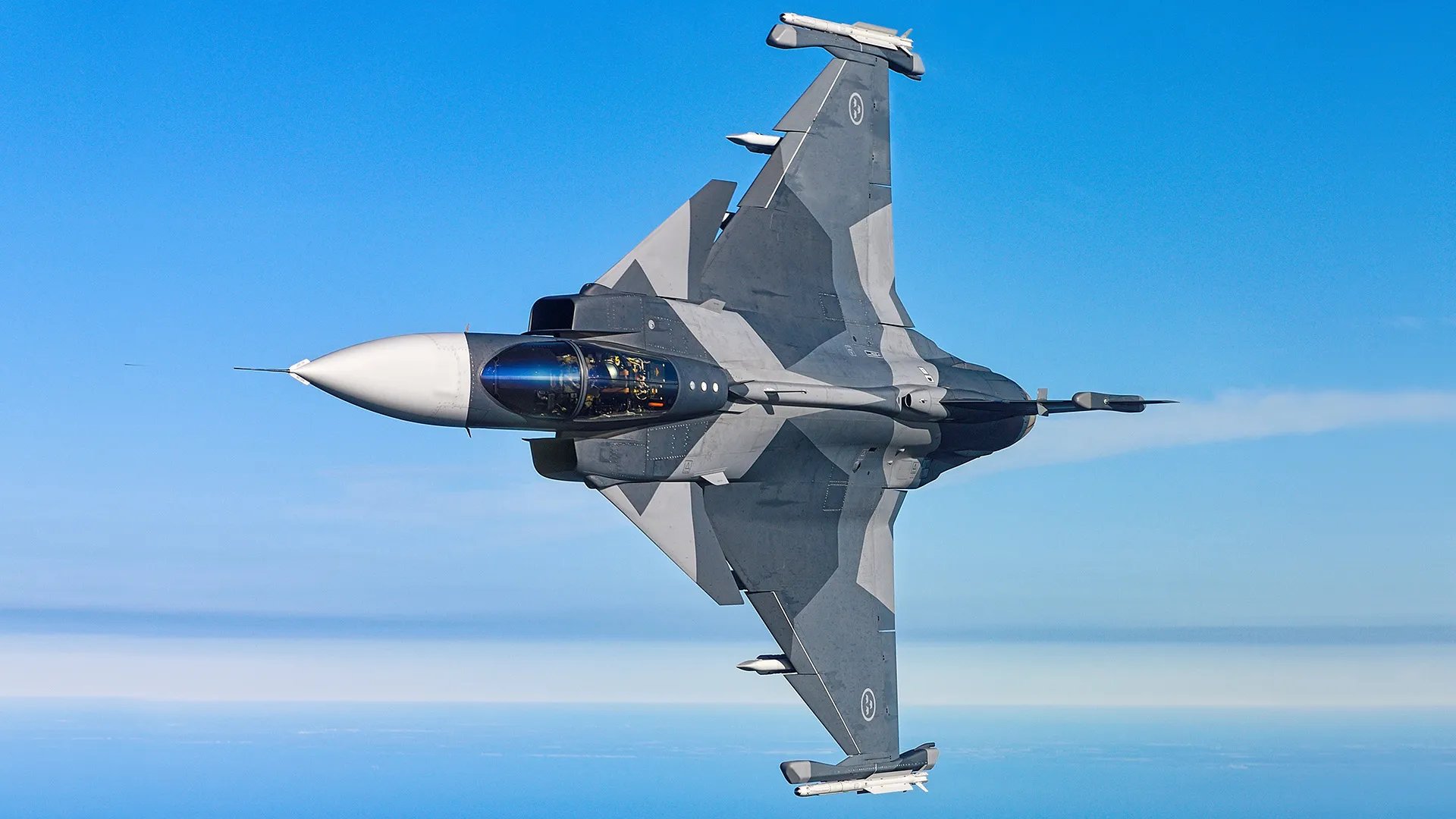 The first serial production standard Gripen E, which first flew in November 2019. Jamie Hunter
The first serial production standard Gripen E, which first flew in November 2019. Jamie Hunter Smaller than many of its contemporaries, the Gripen E/F was developed from the earlier ‘legacy’ Gripen that was designed to meet a very specific Swedish requirement. However, the Gripen E/F variant includes features that would otherwise be more commonly found on larger and more complex fighters.
Compared with the older Gripen C/D, the Gripen E/F has a bigger fuselage that accommodates approximately 30 percent more fuel and has a more powerful General Electric F414 engine, plus a total of 10 hardpoints for weapons and other stores. The cockpit is entirely revised, and the pilot is provided with a single Wide Area Display (WAD), replacing the three separate displays in the Gripen C/D.
The Gripen E/F can carry up to seven MBDA Meteor beyond-visual-range air-to-air missiles. It features the Leonardo ES-05 Raven active electronically scanned array (AESA) radar and the Leonardo Skyward G infrared search and track (IRST) sensor. It also includes a new Saab Electronic Warfare System (EWS), featuring a 360-degree spherical Missile Approach Warning System (MAWS).

Reflecting its Swedish roots, the Gripen E/F is designed specifically to operate in austere environments with very high reliability and minimal support infrastructure, attributes that might make it especially attractive to South American operators.
Less obvious is the Gripen E/F’s avionics architecture, which is designed to enable the rapid insertion of new hardware and updated software applications to take on new missions. Customers are also able to design and develop their own software, to introduce new technologies and systems to keep pace with ever-evolving threats.
Despite Saab winning many plaudits for packing an impressive amount of high-end capabilities into a relatively small and easy-to-maintain airframe, the Gripen E/F has, so far, been a less-than-stellar performer on the export market.
Brazil is the first and to date only export customer for the Gripen E/F, with its decision to buy the fighter influenced to a significant degree by the opportunity to establish a domestic production line. This will assemble 15 of the 36 aircraft currently contracted to the Brazilian Air Force.
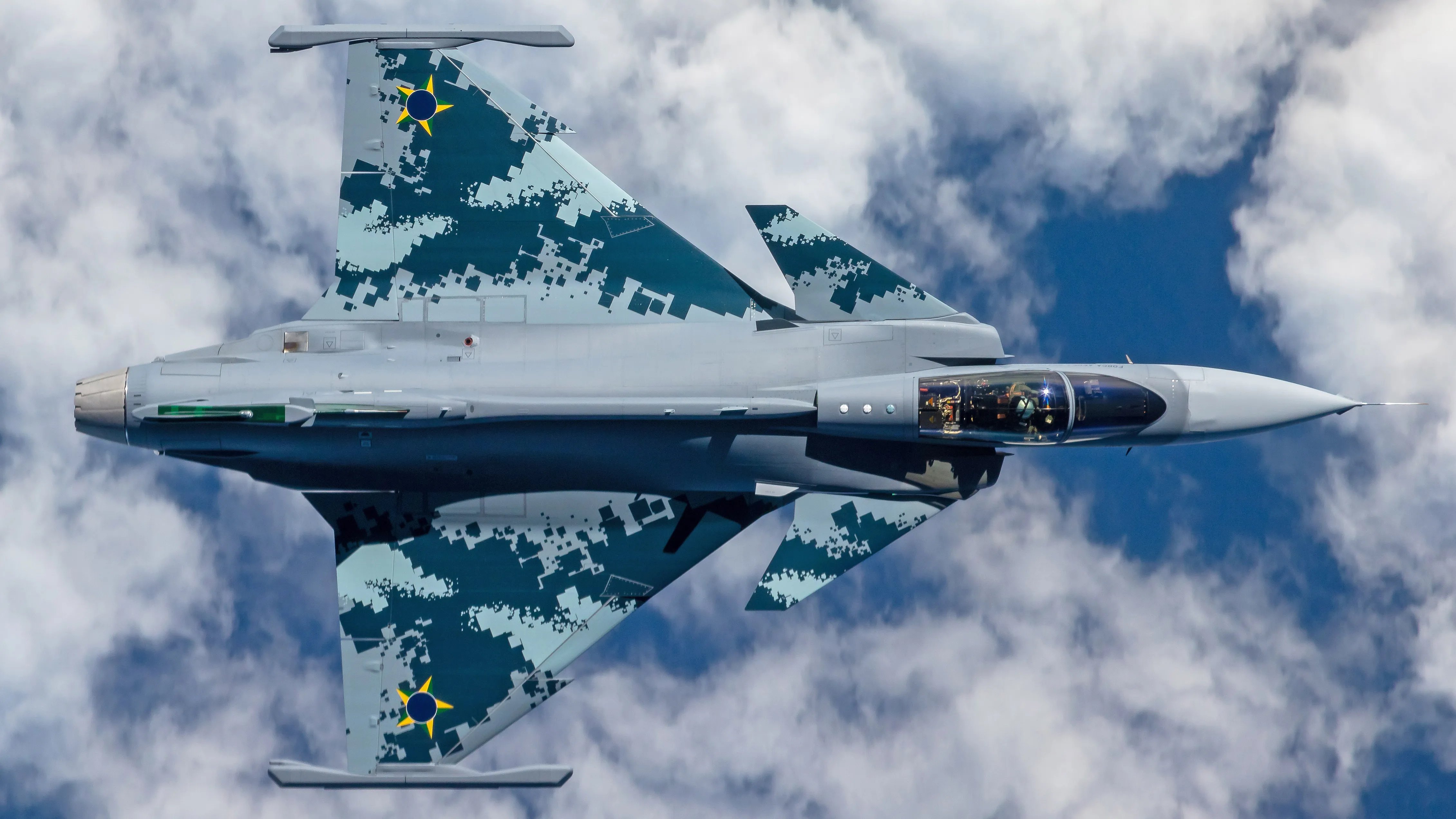 A Brazilian Gripen E — known locally as the F-39 — in flight. Saab
A Brazilian Gripen E — known locally as the F-39 — in flight. Saab Meanwhile, Sweden is buying 60 single-seat Gripen Es for its own requirements.
Last August, the Royal Thai Air Force identified the Gripen E/F as its preferred next fighter. However, the government is yet to sign off on the purchase and a deal with Sweden hasn’t been signed so far.
Ultimately, the increased concerns about the political stability of American arms exports could boost Gripen export sales, although the fighter will still face stiff competition from other European and non-U.S. combat aircraft.
As for Colombia, the selection of a new fighter has been a long time coming.
For more than a decade, Colombia has wrestled with the problem of replacing its Kfir fleet, which was determined to reach the end of its viable service life in 2023.
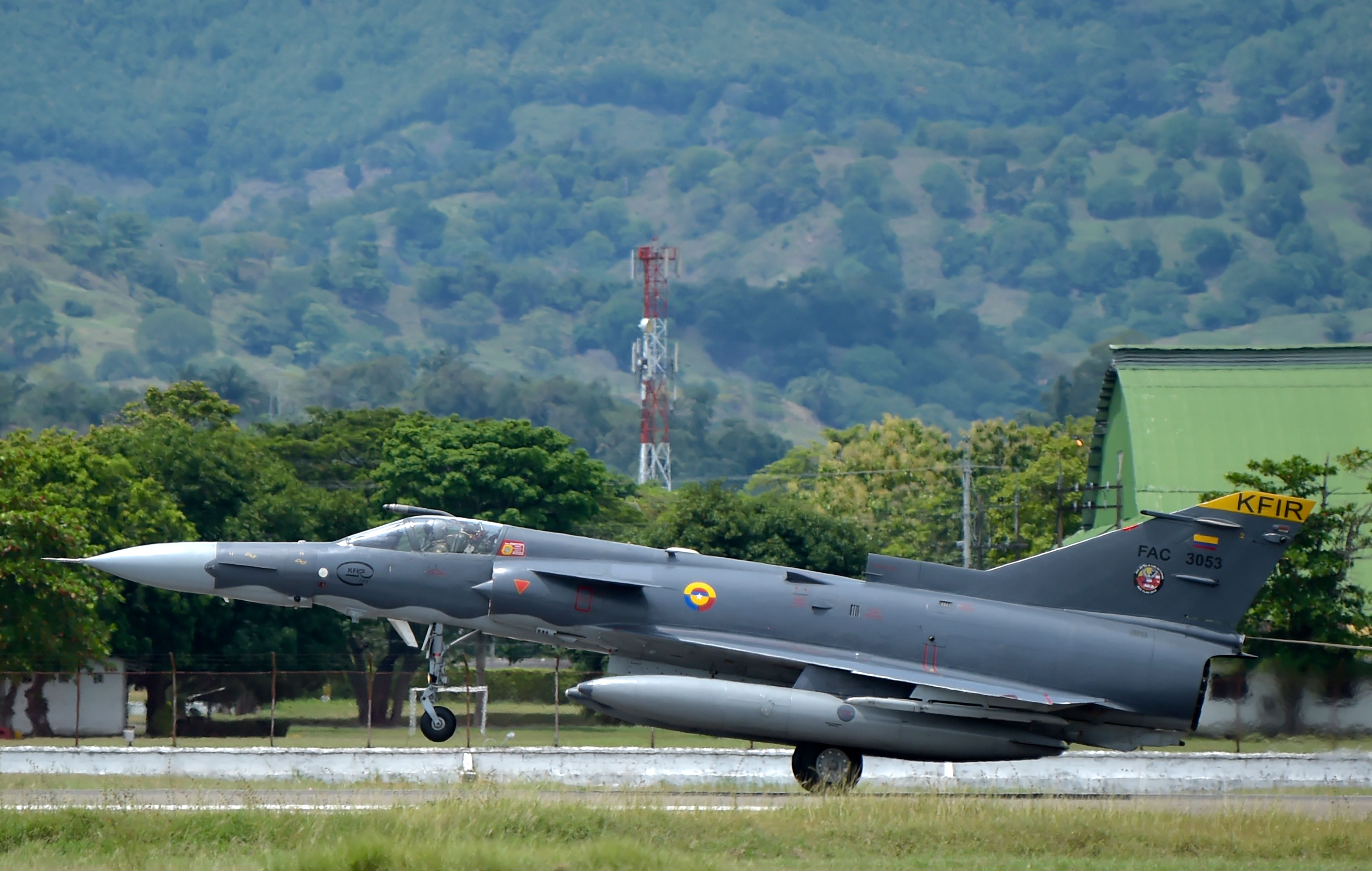 An upgraded Colombian Air Force Kfir C10, photographed in 2020. Photo by RAUL ARBOLEDA/AFP via Getty Images RAUL ARBOLEDA
An upgraded Colombian Air Force Kfir C10, photographed in 2020. Photo by RAUL ARBOLEDA/AFP via Getty Images RAUL ARBOLEDATo keep the Kfirs operational until then, Colombia instigated an upgrade program, known as Colosseum. This saw surviving Kfirs brought up to C10/ C12 standard, which added a new Elta EL/M-2032 multi-mode fire-control radar, electronic countermeasures, Rafael Derby beyond-visual-range air-to-air missiles, Rafael Python 5 infrared-guided air-to-air missiles, and Elbit’s Display and Sight Helmet (DASH) system. The upgraded Kfirs also received Rafael Spice 1000 precision-guided bombs.
By the time the Kfir upgrade work was completed in 2017, Colombia had short-listed the F-16 Block 70, Gripen E/F, and Eurofighter Typhoon for its new fighter requirement. While a decision was stalled by budget constraints and the COVID pandemic, the option of secondhand Danish F-16s was raised — ultimately, this was the route that Argentina took to procure new fighters, as you can read about here.
Then, in 2022, when President Petro took office, the Dassault Rafale was reported to have emerged as the most likely candidate for the Colombian Air Force, with suggestions that 16 examples might be acquired.
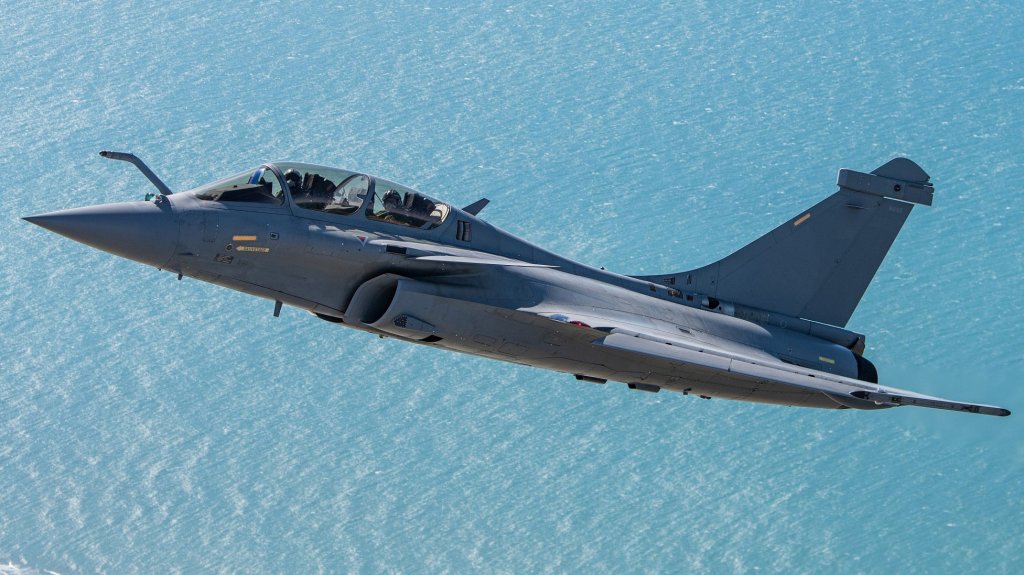 A two-seat Dassault Rafale. Dassault Aviation www.twz.com
A two-seat Dassault Rafale. Dassault Aviation www.twz.comHowever, the Gripen E/F offer finally won out, perhaps a reflection of Saab’s determination to secure further orders in South America, which it has long identified as a key battleground for the aircraft.
Unconfirmed reports from the Colombian media suggest that, while at least some elements of the Colombian Air Force preferred the Rafale, the Gripen E/F was chosen “due to its versatility and technical benefits.”
“It is a very important market to us, and we need to show our capabilities and have a supply chain in place,” Saab CEO Micael Johansson told AirForces Monthly in 2023, about the South American market. “We are working to achieve that and have done a fantastic job transferring technology to Brazil. To get the development center and production capabilities set up at Gavião Peixoto, where we even have a structures component factory. It means we could fulfill more technology transfers to the likes of Colombia. It can be supported from Brazil and would benefit the whole continent.”
 A Brazilian Air Force Gripen over Rio de Janeiro. Saab Linus Svensson @Saab
A Brazilian Air Force Gripen over Rio de Janeiro. Saab Linus Svensson @SaabAt this stage, it’s unclear to what degree the Brazilian factory at Gavião Peixoto, in the state of São Paulo, will support the Colombian deal, although there’s potential for significant involvement. As well as the final assembly of 15 of the aircraft ordered for Brazil the plant builds tail units and front fuselages for Gripen Es as well as wing boxes and front fuselage sections for the Gripen F.
In the past, Saab CEO Johansson has said the plan is for the Gavião Peixoto facility “to manufacture any future Gripen orders for Brazil, as well as for other countries. We want the country to become an export center for Latin America and potentially other regions.”
As for the Kfir, Colombia’s almost four-decade relationship with this fighter now looks to be coming to an end.
During the long conflict with the guerrillas of the Revolutionary Armed Forces of Colombia (better known by the Spanish acronym FARC), the Kfirs saw a good deal of combat.
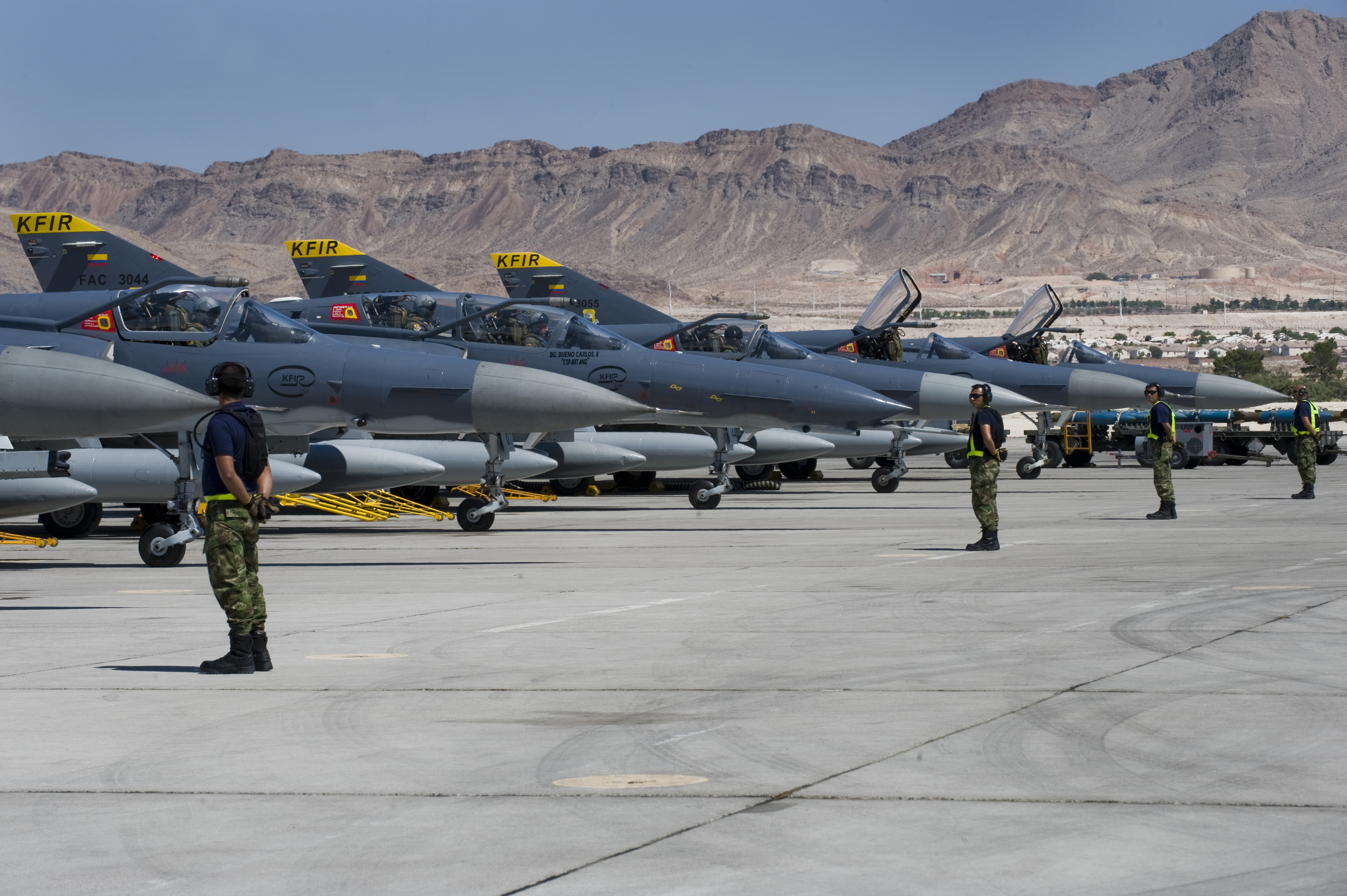 Colombian Air Force Kfirs prepare for a mission during Red Flag 12-4, at Nellis Air Force Base, Nevada, in July 2012. U.S. Air Force photo by Staff Sgt. William P. Coleman Staff Sgt. William P. Coleman
Colombian Air Force Kfirs prepare for a mission during Red Flag 12-4, at Nellis Air Force Base, Nevada, in July 2012. U.S. Air Force photo by Staff Sgt. William P. Coleman Staff Sgt. William P. ColemanHowever, the fleet suffered from some high-profile accidents, and finding spare parts has become increasingly costly and complicated. The situation has gotten worse after Petro’s government broke off diplomatic relations with Israel, in protest against the conflict in the Gaza Strip. This renders the Israeli maintenance contract for the Kfirs obsolete and makes their replacement all the more urgent.
It remains to be seen how many Gripen E/Fs will be procured to replace the Kfirs, or when they might start to arrive, but we now finally have confirmation of Colombia’s chosen replacement for these hard-worked jets.
Contact the author: [email protected]

 By The War Zone | Created at 2025-04-03 17:01:07 | Updated at 2025-04-04 11:05:28
18 hours ago
By The War Zone | Created at 2025-04-03 17:01:07 | Updated at 2025-04-04 11:05:28
18 hours ago








